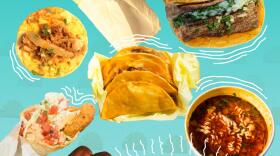In a bittersweet coincidence, the National Climate Assessment was published just as wildfire season made its early debut in California, and, closer to home, the National Park Service announced it was modifying boat ramps to respond to sinking water levels at Lake Mead National Recreation Area. These are exactly the kind of conditions that the assessment, overseen by a 60-member federal advisory committee, warned readers to expect with increasing duration and frequency as the globe warms. We called up Thomas Piechota, UNLV Interim Vice President for Research and the lead author on the section of the assessment that covered the Southwest, and asked what else Nevadans can expect and what it all means.
DC: What’s the scope of this assessment?
PIECHOTA: This is a compilation of all the studies done that feed into a consensus of what the science says for climate change impacts. I don’t have the exact number, but for the Southwest chapter, it’s probably on the order of 100 relevant studies, when you think of all the different areas that are being touched on – whether it’s water, wild-land fires, public health, and so on.
DC: How is it different from all the other climate change studies we hear about?
PIECHOTA: Rather than an individual study asking if Lake Mead will be dry in 20 years, the assessment asks, in what direction are all the relevant studies pointing? That’s what decision-makers like to see.
DC: It’s meant primarily for policy-makers, then?
PIECHOTA: Yeah, but most decision-makers are public officials; they get put into office by the public… It also highlights the importance of everyday life decisions we all make, from how we use water at home, to the types of vehicles we drive, to whether we recycle or not. All these make a difference, whether it’s mitigation or adaptation. We make choices at a very local level, but they have global impact.
DC: The assessment concludes, overall, that human-induced climate change is causing increasing impacts across the country (emphasis added). Is this still a controversial statement?
PIECHOTA: The science shows that humans have impacted climate in the modern era. That’s what the statement alludes to … When I talk to our students and other people about this, I say they need to understand the evidence behind this. It allows them, when they go back to the longer-term records, such as ice cores, to put what’s happening now into the context of larger climate cycles.
DC: Give me a local example.
PIECHOTA: With water supply, sometimes, in tree-ring data, you see a longer-term drought cycle. What Lake Mead looks like today is our barometer for water supply in the region. When you overlay those two, that’s when you get low lake levels – certainly because of drought and warming conditions over the last 15 years, but also because of growth of the region. Projecting out over time, the models show that the region will likely continue to experience a gradual warming over time. Precipitation is harder to say, but even just the warming by itself would be enough to impact snow pack and water supply in the region. We have to think about how we mitigate that.
DC: So, the focus is on impact more than on cause-and-effect?
PIECHOTA: It wasn’t focused as much on causes of climate change or variability. It was more focused on what things will look like and what the impacts will be, given that we know climate’s going to look different in the future. People who want to make decisions around climate want to understand the vulnerability of systems.
DC: So there’s an impact mitigation component to it too?
PIECHOTA: Yes, mitigation and adaptation. The mitigation piece is, how do you reduce the things that are changing our climate, such CO2 emissions. The adaptation piece is more, how do you change infrastructure to respond to the changing climate.
DC: The report cites many impacts Southern Nevadans can relate to – longer, hotter summers; shorter, warmer winters; more severe seasonal allergies; wildfires that start earlier, burn longer and consume more acreage. How do we begin to adapt?
PIECHOTA: I think there’s a real need to identify vulnerable populations. If you look out over time in urban areas, for instance, where you have the urban heat island effect, they will have warmer summer days. Homeless people can’t always get into a conditioned space; people living in poverty may not have the means to (cool their homes). Native American populations may rely on local water supplies and have no ability to tap into new sources. Those are the ones you talk about.
DC: What’s the top priority?
PIECHOTA: For our region, water really drives a lot of what we do. It drives the economy of the region, and there’s a lot we can do in that area. You see this playing out in our region already with some of the inter-state cooperation on the Colorado River. I think that’s where we’re going with adaptation: How the states and other entities work together.







